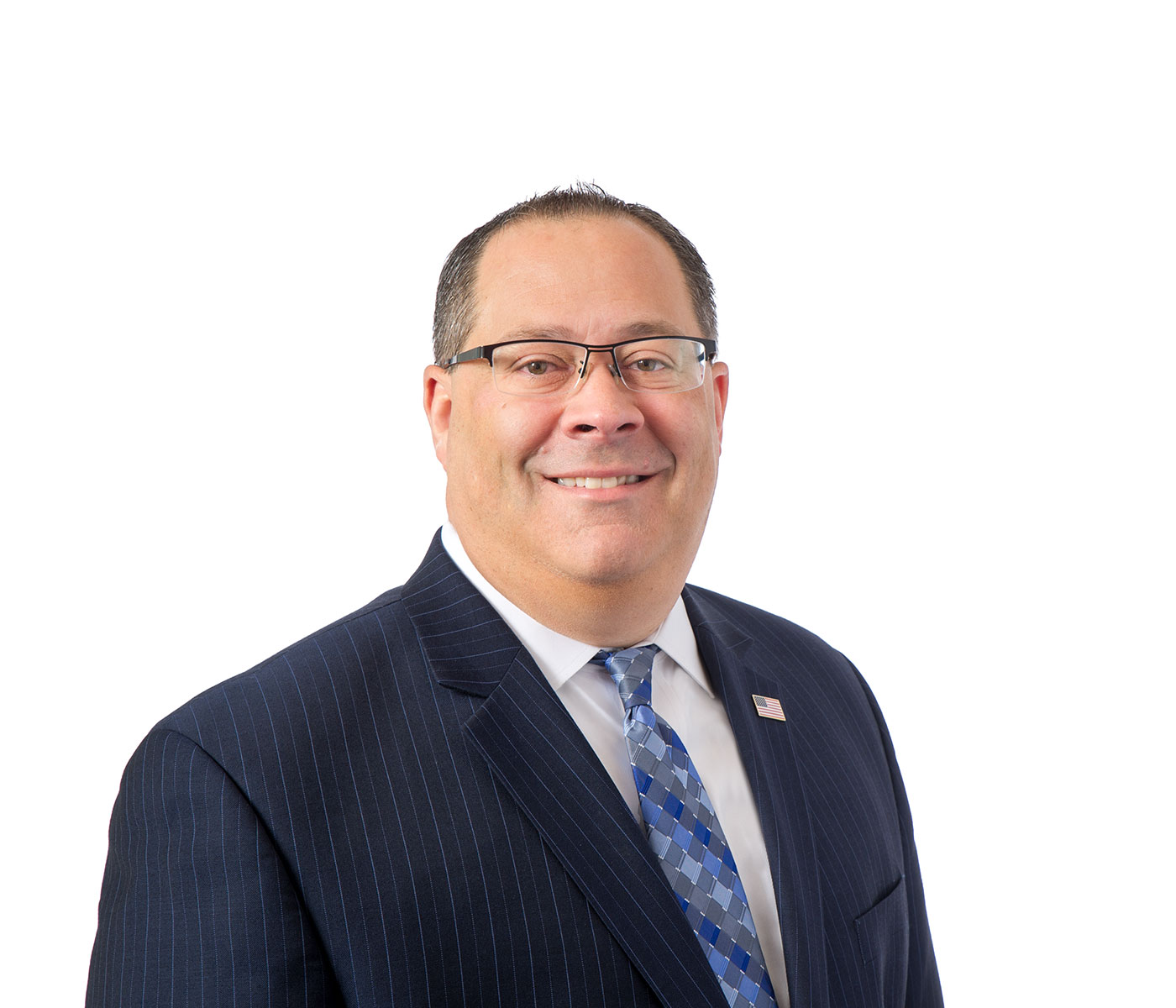 Walter | Haverfield attorney Jamie Pingor advises companies to adopt social media policies that protect their brands and limit what employees may post on their personal pages. His article appears in Crain’s Cleveland Business.
Walter | Haverfield attorney Jamie Pingor advises companies to adopt social media policies that protect their brands and limit what employees may post on their personal pages. His article appears in Crain’s Cleveland Business.
Tag: Articles
Adviser: Beware of the blurred lines between professional and private social media
James J. Pingor
October 20, 2018
You Have a Design: How Do You Protect It?
DeMarcus E. Levy
 When attempting to protect the appearance of a product as opposed to its utility, either trademarks or design patents may be appropriate. It can be difficult to determine which type of intellectual property protection to pursue. Though they are separate protection vehicles, trademarks and design patents may well complement each other as described below:
When attempting to protect the appearance of a product as opposed to its utility, either trademarks or design patents may be appropriate. It can be difficult to determine which type of intellectual property protection to pursue. Though they are separate protection vehicles, trademarks and design patents may well complement each other as described below:
Design Patents:
A design patent offers protection for the design for an article of manufacture, or put differently, the configuration, shape or surface ornamentation of a product or some combination thereof. This allows a manufacturer to reap the benefits of design efforts by making the production of knockoff products illegal. Assuming the protected product is of good quality, this builds good will with those who purchase the product. Unlike a utility patent, a design patent does not protect how the product functions, simply how it looks; it cannot be functional.
Trade Dress:
A registered trademark is essentially official recognition of a brand by the government. It identifies the manufacturer as the source of the products associated with the mark. Trade dress is a particular type of trademark that protects the design of a product (essentially the packaging, color, flavor, shape, configuration and other distinctive physical characteristics). Trade dress works to associate the design, and thereby the product, exclusively with its manufacturer. Like a design patent, a trademark cannot be functional.
Potential Remedies:
Infringement of a design patent can result in damages of a reasonable royalty fee and up to three times the amount found or assessed. Unlike utility patents or plant patents, design patent damages can also include the total profits of the infringing party but not less than $250. Note that, given recent Supreme Court precedent, if an article of manufacture (e.g. something made by hand or with a machine) protected by a design patent is one of many components that comprise a product, recovery may be limited to a portion of profits attributable to the protected component. Attorney’s fees may also be recoverable. Additionally, infringement may be stopped by an injunction prohibiting continued unauthorized use.
Infringement of trade dress may include court costs of the defendant, profits earned and an attorney’s fees. As with design patents, infringement may be stopped by an injunction prohibiting continued unauthorized use.
Which Vehicle to Choose:
The best vehicle to protect your product depends on a number of factors. You should consider how soon you want your protection to start, when it will end, and how the protection you choose will impact your business plan. A design patent can be obtained quickly—in a matter of months- allowing you to immediately prevent competitors from copying your design. Trade dress protection cannot be secured unless the applicant has used the mark in commerce and acquired secondary meaning (e.g. customers associate the mark exclusively with the manufacturer), which takes five years. A design patent expires 15 years after it is granted while trade dress, being a trademark, has an initial term of 10 years. But it may be renewed indefinitely for 10-year increments. Patent design protection remains even if the patent is never used. Conversely, trade dress must be used continually in commerce to be preserved. However, use of trade dress in commerce before securing a design patent may disqualify an applicant from securing a design patent for the same product or product component. As nothing prohibits simultaneous possession of both a trademark and a design patent, design patent protection and trade dress protection can be held simultaneously for the same product.
DeMarcus Levy is an attorney at Walter | Haverfield who focuses his practice on intellectual property law. He can be reached at dlevy@walterhav.com or at 216-928-2945.
Is someone listening? What districts can do about a student monitoring device
Lisa H. Woloszynek
September 30, 2018
Safety-oriented assistive technology for children with special needs has proliferated in recent years. One of the more recent devices is called AngelSense. The name sounds innocuous, but its potential misuse is raising concerns for school districts.
Recently, districts have been faced with an increased number of requests to permit AngelSense in their classrooms. The device is a GPS tracker with a corresponding app, and it’s designed for parents to locate a child with special needs who may elope. While it’s not a recording device, the device does have a “listen-in” feature, which is raising red flags for many schools.
The ability of a third party to listen in to another conversation without his/her consent is a privacy concern. Some states require consent from all parties to a conversation before such a “listen-in” device can be used. However, in Ohio, only one party’s consent is required. But there are other legal issues that a school district must consider when faced with a request for student use of AngelSense (or similar device). For example, there are numerous laws that protect students from discrimination, especially a child with a disability. Those include the Americans with Disabilities Act and Section 504 of the Rehabilitation Act of 1973. Schools must be cautious not to deny a child with a disability a service or privilege that other students can access. With this in mind, when an AngelSense request is made, a school may permit or deny the request in accordance with the district’s policies. It is important to consider relevant policies (such as those for recording/transmitting information) as well as the capabilities of other electronic devices, such as smartphones (don’t forget those have pesky features like GPS and recording, too) that non-disabled students utilize at school. Then, be sure that the school’s response to the request is applied uniformly and in alignment with such policies.
Additionally, schools may need to consider the Individual with Disabilities Education Act, Section 504 and corresponding state obligations as to whether the child requires use of the device in order to receive a free appropriate public education (FAPE). This may become an especially important analysis when elopement is a significant concern for a child. Also, be sure to document the team’s consideration of the request, including whether the device would be appropriate assistive technology for the child.
Lastly, the school may request that listen-in devices be disabled during school hours. This request can be placed into a formal agreement with the family, with specific hours set for the listen-in schedule. To enact this agreement, the school will use the school dashboard feature once it is set up by the family. While it is important to note that only a primary guardian for the device will have automatic access to edit the listen-in schedule, AngelSense can, and will, remove the primary guardian’s ability to edit the listen-in schedule should the school request it. Moreover, once a parent/guardian agrees, AngelSense can send notifications to the district when the listen-in feature is deactivated or activated.
Regardless of the route the school takes, remember to conduct appropriate consideration of a request, apply policies uniformly and analyze whether the device is necessary to provide a FAPE on an individual basis. Ultimately, districts may even find that they need to develop appropriate policies to address similar requests in the future.
Lisa Woloszynek is an attorney at Walter | Haverfield who focuses her practice on education law. She can be reached at lwoloszynek@walterhav.com and at 216-619-7835.
Ohio Attorney General: Courts Should Decide Who Pays Education Costs
Walter Haverfield
The Ohio Attorney General’s office (AG) has issued an opinion regarding the obligations of education costs for students placed in out-of-state residential facilities. And while the opinion is not controlling on the courts, they may refer to it when making decisions.
There has long been confusion regarding financial responsibility for the education costs of a child in the custody of a public service agency who is placed in a private residential facility outside the state of Ohio. Is it the responsibility of the board of education of the student’s home school district, the board of education of the school district the student is moving to, or another public entity in Ohio?
The AG concluded that when an abused, neglected or dependent child is in the custody of a public agency and then placed in a private, out-of-state residential facility, in a state that is a member of the Interstate Compact on the Placement of Children, the school district designated by the court will be responsible for the costs of educating that child. The court will decide which school district holds that responsibility, based on which district is the student’s “school district of residence” under the Ohio Revised Code. Depending on a number of variables, including whether the child receives special education, different provisions of the Ohio Revised Code apply to determine which school district is the child’s “school district of residence.”
The AG based this conclusion on the Interstate Compact on the Placement of Children, which was adopted by Ohio in 2006. The Interstate Compact continues the care provided by a public agency when a child is placed in another state. The state that sends the child retains jurisdiction over related custody matters. The Interstate Compact does not determine the distribution or division of costs for educating the child. However, it does provide that such costs should be divided and assessed as they would have been if the child was placed in Ohio. For children residing in Ohio, who are in the custody of a public agency, the Ohio Revised Code designates the child’s “school district of residence” as the district responsible for the child’s educational costs. Therefore, the AG concluded the child’s “school district of residence,” as determined by the applicable provisions of the Ohio Revised Code, would likewise be responsible for the educational costs of a child’s out-of-state placement.
Although the opinion is informative, it is only general guidance. It does however highlight the need for school districts to ensure that, if they are designated the “school district of residence” for a child, the court’s determination is correct. If the school district determines that it is not the child’s “school district of residence,” steps should be taken immediately to rectify the situation due to the potential costs involved. Additionally, school districts should remember that different provisions of the Ohio Revised Code apply to “school district of residence” determinations depending on the circumstances (e.g., child requiring special education, incarcerated parent, etc.). Districts should work directly with legal counsel regarding specific situations.
Christina Peer is chair of the Education Law group at Walter | Haverfield. She can be reached at cpeer@walterhav.com or at 216-928-2918.
Anyone’s Bet: The Legalization of Sports Betting in Ohio
Walter Haverfield
Ohioans may soon be able to place bets on their favorite sports teams in bars and casinos throughout the state. This past spring, the U.S. Supreme Court struck down a 1992 federal law in Murphy v. National Collegiate Athletic Association that had effectively banned sports betting in most states. This decision has opened the door for states to legalize sports betting across the country.
The change comes more than two decades after sports betting was outlawed at the national level. In 1992, Congress enacted the Professional Sports Protection Act in response to concerns over state-sponsored sports gambling. Delaware, Montana, Nevada and Oregon were exempt from the new law as they had already established a sports betting system.
The law went unchallenged until 2014, when, in an effort to make sports betting legal in New Jersey, lawmakers there repealed provisions of its state law that prohibited sports gambling. The major professional sports leagues and the NCAA brought an action in federal court against the state. The case made its way up to the Supreme Court, which held PASPA to be unconstitutional because it requires states to maintain their existing laws against sports gambling without alteration.
The result of Murphy is that each state can now decide whether to legalize sports betting and how to do it. While many states have quickly moved to make this a reality, Ohio is taking a more deliberate approach. In July 2018, placeholder bills were introduced in both the Ohio Senate and House of Representatives to begin the process of drafting sports betting legislation.
Since the proposed bills are only placeholders, we do not yet have any actionable details on what guidelines Ohio plans to put in place, how it plans to regulate betting practices, or what businesses will be permitted to participate. Supportive legislators are hopeful that a sports betting bill will reach the Ohio Senate and House floors soon after the November election, although it is unlikely Ohio will pass any legislation until 2019 or 2020.
With the exception of the Ohio Lottery, casinos and charitable bingo, the Ohio Revised Code currently prohibits any organization or individual from operating a gambling house or allowing public gaming to occur on premises. And the Ohio Constitution has certain prohibitions as well. Ohio legislators will need to determine whether authority exists in Ohio to allow sports betting through legislation and possibly even a constitutional amendment.
If legislators can find a way, sports fans will legally be able to collect their winnings on placing an Ohio-based wager for the Cleveland Indians to win the World Series or the Browns to win the Super Bowl. Until then, fans can only dream.
Emily O. Vaisa is an attorney at Walter | Haverfield who focuses her practice on liquor control and business law. She can be reached at eoconnor@walterhav.com or at 216-928-2909.
John Neal is an attorney at Walter | Haverfield who focuses his practice on liquor control and business law. He can be reached at jneal@walterhav.com or at 216-619-7866.
Appellate Court Hears Cities’ Challenge to Central Tax Filing for Business Income
Walter Haverfield
Walter | Haverfield’s Darrell Clay described how Ohio municipalities have constitutional home rule authority to levy taxes, in an article published in The Hannah Report.
Confusion remains over CBD oil sales
Walter Haverfield
Ohio To Recognize Blockchain Technology
Gregory L. Watkins
 On November 2nd, 2018, an Ohio law goes into effect allowing records and contracts secured by blockchain data. This comes after Governor John Kasich signed Senate Bill 220 (SB220) in August, which amends Ohio’s Uniform Electronic Transactions Act (UETA).
On November 2nd, 2018, an Ohio law goes into effect allowing records and contracts secured by blockchain data. This comes after Governor John Kasich signed Senate Bill 220 (SB220) in August, which amends Ohio’s Uniform Electronic Transactions Act (UETA).
UETA ensures electronic transactions are enforced to the same effect as written transactions. SB220 amends the definition of “electronic record” in UETA to add that “a record or contract that is secured through blockchain technology is considered to be in an electronic form and to be an electronic record.” SB220 also amends the definition of “electronic signature” to expressly provide that signatures secured through blockchain technology are considered to be in electronic form and be an electronic signature.
SB220 was born out of Senate Bill 300 (SB300), which was introduced in May 2018. SB300 sought to implement blockchain and its associated technologies into Ohio legislation even further than SB220 as it also defined “blockchain technology” and “smart contract.” SB300 died in the Senate, however, and only a few of its provisions were implemented via SB220.
Ohio joins Arizona, Delaware, Illinois, Nevada, Tennessee, Vermont and Wyoming as states enacting or adopting laws that reference blockchain. Meanwhile, California legislatures continue to work on their blockchain legislation. Legislatures in Florida and Nebraska have also proposed blockchain legislation, but the pursuit of passing the legislation has been abandoned indefinitely.
Greg Watkins is an attorney at Walter | Haverfield who focuses his practice on business services and blockchain technology. He can be reached at 216-928-2917 or at gwatkins@walterhav.com.
NLRB’s New Employee Handbook Guidance
Walter Haverfield
July 20, 2018
- “Disparaging or offensive language is prohibited.”
- “Employees may not engage in disrespectful conduct.”
The above rules might seem reasonable to you or perhaps you have seen them in your own company’s employment policies. However, prior to the National Labor Relations Board’s (“NLRB”) ruling in The Boeing Company, 365 NLRB No. 154 (Dec. 14, 2017), these types of work rules would likely have been considered unlawful by the NLRB. That’s because a 2004 NLRB ruling (Lutheran Heritage Village-Livonia) found that employees could “reasonably construe” such policies as restricting their ability to participate in “concerted activity” for “mutual aid and protection” under the National Labor Relations Act (NLRA).
In June 2018, the NLRB’s General Counsel Peter Robb issued a memo titled “Handbook Rules Post-Boeing,” which provides helpful guidance in an area where there was once not much reliable guidance at all. Following Boeing, the Board has indicated that it will approve the use of rules that promote “harmonious interactions and relationships” or “civility” in the workplace. Handbook rules are now split into the following groups: (1) rules that are generally lawful to maintain; (2) rules which will warrant individualized scrutiny and review by the General Counsel’s Office; and (3) rules that are clearly unlawful to maintain. Below are the types of rules that fall into each category:
(1) Rules That Are Generally Lawful
Civility rules, no-photography and no-recording rules, rules against insubordination, disruptive behavior rules, rules against defamation or misrepresentation; rules protecting confidential or proprietary information; rules against using employer logos and/or intellectual property; rules requiring employees to receive authorization to speak for their employer; and rules banning disloyalty.
(2) Rules Which Require Greater Scrutiny
Broad conflict of interest rules; broad confidentiality rules; rules regulating disparagement or criticism of the employer; rules regulating use of the employer’s name; rules restricting speaking to the media; rules banning off-duty conduct that might harm the employer; and rules against making false or inaccurate statements.
(3) Clearly Unlawful Rules
Confidentiality rules that specifically mention wages, benefits or working conditions; and rules against joining outside organizations.
Although the Board’s guidance is certainly helpful, careful crafting of employment policies is still necessary.
Three steps employers must take when engaging in the interactive ADA process
Walter Haverfield
 Attorney Rina Russo explains the steps employers must take when responding to an employee’s request for an extended leave of absence from work. Her article appears in the Council of Smaller Enterprises’ (COSE) e-newsletter, “Mind Your Business”
Attorney Rina Russo explains the steps employers must take when responding to an employee’s request for an extended leave of absence from work. Her article appears in the Council of Smaller Enterprises’ (COSE) e-newsletter, “Mind Your Business”
Brand Names: Don’t Be the Next Unicorn Frappuccino
Kevin J. Soucek
July 13, 2018
Walter | Haverfield attorney Kevin Soucek advises companies to do their due diligence before introducing a brand name in the marketplace. Soucek’s article appeared in “Mind Your Business,” an e-newsletter for small business owners published by the Council of Smaller Enterprises (COSE).
U.S. Supreme Court to Resolve Issue of Copyright Registration
Sean F. Mellino
 The U.S. Supreme Court has agreed to review a case which should clarify the longstanding question of whether a copyright owner requires a federal copyright registration in order to bring a federal suit. The Supreme Court will hear the case (Fourth Estate Public Benefit Corp. v. Wall-Street.com, LLC) and is expected to clarify the issue when it begins its next session in October.
The U.S. Supreme Court has agreed to review a case which should clarify the longstanding question of whether a copyright owner requires a federal copyright registration in order to bring a federal suit. The Supreme Court will hear the case (Fourth Estate Public Benefit Corp. v. Wall-Street.com, LLC) and is expected to clarify the issue when it begins its next session in October.
This development may likely underscore the importance of securing a U.S. copyright registration as soon as possible, if you don’t already have one. Any delay in securing official registration status may further expose a body of work to infringement or misappropriation to the point that it’s too late to recover adequate monetary damages.
Registering a copyright (which is the exclusive legal right given to an originator or an assignee to print, perform, film or record literary, artistic or musical material) is especially advisable because the federal courts have historically been divided on the issue. That, in turn, causes continued confusion for the public as to how most effectively (and when) to protect copyrights. For example, the Tenth and Eleventh circuits take the approach that an issued copyright registration is required to bring a lawsuit. There are others, such as the Fifth and Ninth circuits, that believe merely filing an application to register a copyright with the U.S. Copyright Office is sufficient to initiate a federal suit. Then there are circuits, such as the Sixth Circuit (which includes Ohio), that have not taken a formal position on the issue. However, the lower district courts in the Sixth Circuit appear to generally take the stance that a copyright registration is needed. Lastly, the U.S. Copyright Office itself has weighed in and believes the registration approach is appropriate.
The time it takes to secure a copyright registration can be more than a year from the time of filing an application. So, it is prudent for copyright owners to consider filing early and often, especially since the process is relatively inexpensive.
If you have copyright questions or concerns, please reach out to our Intellectual Property team. We’d be happy to help.
Sean Mellino is an attorney with Walter | Haverfield and concentrates on intellectual property law. He can be reached at smellino@walterhav.com or at 216-928-2925.




